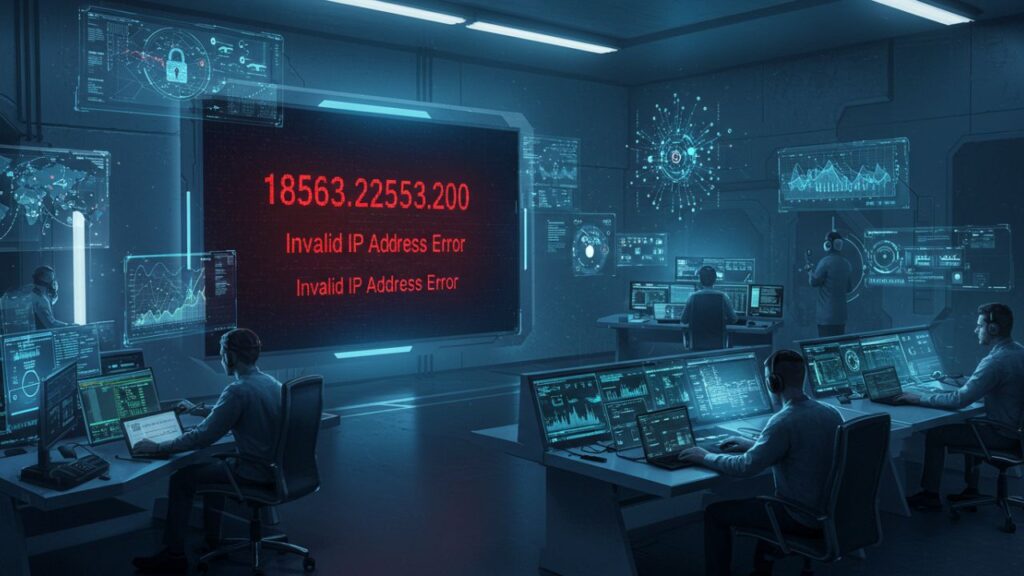The string 185.63.2253.200 might appear to resemble a valid IPv4 address at first glance. But here’s the catch — it’s not. That IP is not real, and it brings to light crucial details about IP address formatting, cybersecurity risks, and network anomalies. Whether you’re a network admin, cybersecurity enthusiast, or just someone who stumbled upon this suspicious number, knowing why 185.63.2253.200 doesn’t work—and what it might be hiding—is essential.
Let’s dive deep and decode everything you need to know.
What is 185.63.2253.200?
185.63.2253.200 looks like an IPv4 address, but it’s not valid. Why? Because in IPv4, each segment (octet) must range from 0 to 255. The third octet here, 2253, breaks that rule.
An IP like this often shows up in:
-
Malware scripts
-
Phishing URLs
-
Malicious redirects
-
Typosquatting or obfuscation techniques
So, 185.63.2253.200 is either a mistake or a deliberate attempt to deceive.
Why is 185.63.2253.200 Not a Valid IP Address?
In IPv4, a typical address follows this format: X.X.X.X
Each “X” must be a number from 0 to 255.
Breakdown of 185.63.2253.200:
-
185 ✅
-
63 ✅
-
2253 ❌ (Exceeds 255)
-
200 ✅
That third number makes the entire address technically unusable.
Potential Risks of Encountering 185.63.2253.200
Fake IPs like 185.63.2253.200 are often used in:
-
Spoofed emails (to appear legitimate)
-
Botnet commands (masking control centers)
-
Rogue scripts (redirecting traffic)
Be cautious if you:
-
Find this in logs
-
Spot it in your DNS lookups
-
See it embedded in a link or QR code
Hackers might be hiding something malicious.
Common Uses of Invalid IPs in Cyber Threats
Malicious actors use such invalid IPs for:
-
Evading detection
-
Misleading logs
-
Triggering faulty firewalls
Some attack tools insert bogus IPs to:
-
Bypass input validation
-
Create confusion
-
Test for poorly configured systems
How Hackers Might Obfuscate IPs Like 185.63.2253.200
Attackers are smart—they rely on:
-
Encoded strings
-
Hexadecimal formats
-
Octal or dotted decimal tricks
They may write 185.63.2253.200 as:
-
0xB9.0x3F.0x8CD.0xC8(Hex form) -
0311.077.04225.0310(Octal)
While it still won’t validate, tools may attempt to process them.
How to Validate IP Addresses Correctly
To ensure you’re dealing with valid IPs:
-
Use regular expressions in scripts.
-
Employ tools like:
-
ipcalc -
ping(checks for response) -
nslookupordig
-
Regex pattern for IPv4:
Detecting 185.63.2253.200 in Logs or Files
Use tools like:
-
Grep or awk for pattern search
-
Wireshark for packet inspection
-
Splunk or ELK Stack for deep analysis
Look for patterns:
-
Hidden in base64
-
Inside encoded URLs
-
Disguised in comments/scripts
Should You Block 185.63.2253.200 in Your Firewall?
Yes—and here’s why:
Even though it’s invalid, blocking it preemptively adds a layer of protection. Scripts might still reference it, triggering alerts or DNS issues.
Configure firewalls like:
-
iptables (Linux)
-
pfSense (Firewall platform)
-
Windows Defender Firewall
Example:
(Though invalid, the command may prevent certain parsing behaviors.)
SEO Spam and Fake IPs Like 185.63.2253.200
Spammers sometimes embed fake IPs in:
-
Blackhat SEO links
-
Comment spam
-
Redirect chains
You might see 185.63.2253.200 in:
-
Analytics referrers
-
Suspicious URLs
-
Backlink profiles
Always check those referring domains and disavow spammy ones.
What To Do If You See 185.63.2253.200 in Email Headers
Use email forensic tools to:
-
Decode headers
-
Trace origin
-
Flag anomalies
Tools:
-
MXToolbox
-
MailHeader Analyzer
-
Google Admin Toolbox
IP Obfuscation Techniques Involving Strings Like 185.63.2253.200
Common techniques include:
-
Replacing dots with spaces
-
Using Unicode characters
-
Embedding in JavaScript
Example:
Such scripts often aim to bypass detection or lead to shady domains.
Using DNS Tools to Investigate Suspicious IP-like Entries
Try:
-
dig -x 185.63.2253.200(Reverse DNS lookup) -
whoisto trace domains -
nmapfor scanning endpoints (if valid)
Even if invalid, sometimes malformed entries appear in DNS logs. Investigate with caution.
Is 185.63.2253.200 Ever Auto-Corrected by Browsers?
Browsers today follow strict URL validation. However:
-
Older versions or poorly configured ones may attempt to resolve it.
-
Some treat numbers as hostnames, not IPs.
So while Chrome or Firefox won’t navigate to this, less secure environments might try.
How to Educate Teams About IP Misuse Like 185.63.2253.200
Conduct:
-
Security awareness training
-
Email header analysis sessions
-
IP validation workshops
Include real-world phishing case studies that embed fake IPs.
Can Malware Use Fake IPs Like 185.63.2253.200?
Yes. Malware often uses:
-
Dummy IPs to test evasion
-
Malformed IPs for redirect attempts
-
IP-like decoys in their payloads
Use endpoint protection and sandboxing to catch such behaviors.
Avoiding False Alarms with Strings Like 185.63.2253.200
Sometimes developers accidentally:
-
Hardcode wrong IPs
-
Mistype configurations
Always differentiate between mistake and malice using:
-
Context analysis
-
Code review
-
File integrity checking
185.63.2253.200 in the Wild: What We Know
While no official use has been documented for 185.63.2253.20, forum discussions and malware databases show it has appeared in:
-
Bad bot scripts
-
Exploit attempts
-
Blacklists
Stay alert if it shows up.
How to Report Malicious IP-Related Activity
Use these services:
-
AbuseIPDB
-
Spamhaus
-
Google Safe Browsing
While 185.63.2253.200 might not be valid, if it’s in a redirect, email, or exploit chain—report it anyway.
Conclusion
The string 185.63.2253.200 serves as a powerful reminder: not everything that looks technical is functional—or safe. In today’s cybersecurity climate, awareness of malformed and deceptive data is more critical than ever. Whether accidental or intentionally malicious, such entries can pose real risks.







